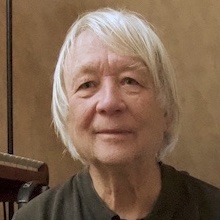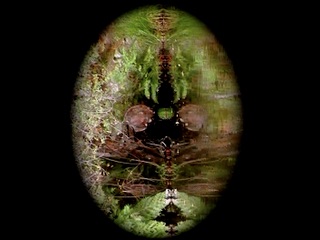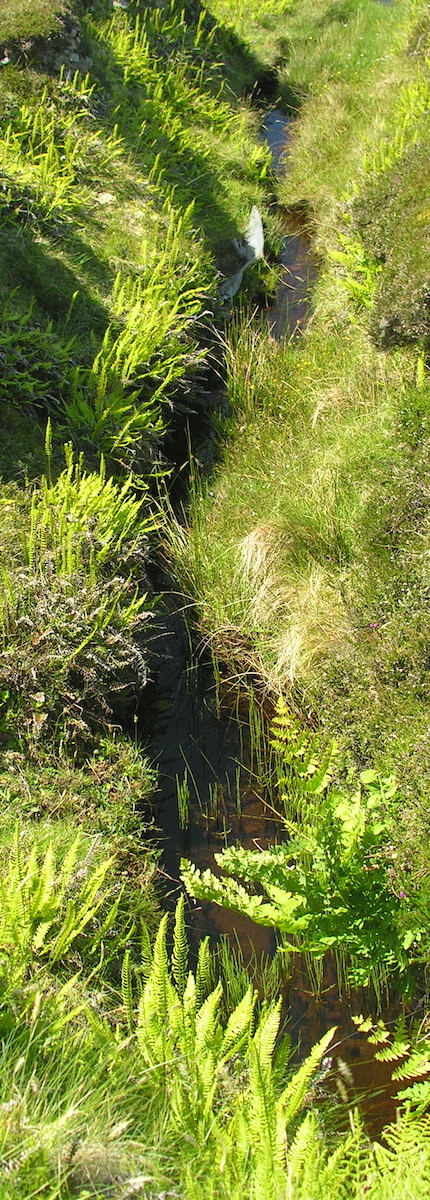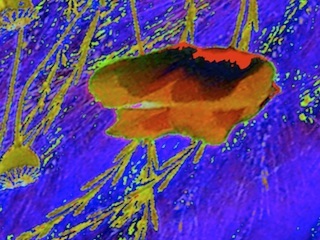The perception of time during listening, which led to the design of the Randolon rhythm generator to compose the music for the thirteen "Anachronistic Poems", and then often to implement this approach for subsequent creations.
 AUTHOR: Charles-Edouard Platel, composer of electroacoustic music.
AUTHOR: Charles-Edouard Platel, composer of electroacoustic music.
ABSTRACT: An approach to composing music that is not based on regularity of rhythm by focusing on notions of " time bending ".
1. Musical timeline
The course of musical time is not necessarily regulated by the regularity of the rhythm.
The regular and repetitive rhythms reflect the processes of human activity: the sounds of the city, factories and workshops, the expression of an intense and busy social life. Before this human activity, the sound space is composed of non-regular noises, although they form rhythms. The rhythms of the natural soundscapes, the seaside, the wind in the forest, the singing of birds, are admirably undecided or chaotic.
Yet, the intuition of a contemplative listener will unconsciously seek to distinguish a meaning, derived from the present circumstance, from the immediate past, and even a meaning towards imagined future states.
The thirteen "Anachronistic Poems" invite us to this paradoxical listening, cradled by a subjective " time bending ": although each sound seems to arise according to the hazards of nature, it subtly connects past sounds that have already vanished with future sounds that have not yet been heard. There is a kind of swing in the sequence of sound objects, much like poetry brings swing to the succession of words.
2. Ana-chronology
In addition, I observed that a contemplative listening to natural soundscapes also leads to the identification in each noise, which is unpredictable by nature, of memories of previous noises and a feeling of the following ones. I therefore imagined integrating this concept into the instrumentation of the composition process to model "anachronistic" musical landscapes.
This music is a poetic freedom, which could be felt as anachronistic for today's listeners, regularly encouraged to immerse themselves in experiences of relentless rhythm and oppressive acoustic saturation.
A musicology book whose title had caught my attention also helped me to formulate these ideas:
"Harmonie et courbure du temps" of François Leclère :
 "The musical work is a temporal phenomenon that begins and ends by trying to achieve cohesion. The effective realization of the law of time, so obvious when we speak of the general concept of music, then becomes much more complex, because the work cannot be content to be a simple succession of more or less heterogeneous elements. If the time of a work is successive, it still needs, to create cohesion, that each of its moments maintain permanent relationships with all the others. To give rise to a present within successiveness, each moment must be conceived in a surpassing of itself, which integrates not only the totality of what preceded it, but also the totality of what will follow it, in a continuous play of memories and presentiments. Time (law of successivity) and space (permanent relationships between all moments) then constitute two inseparable moments. They intertwine in the present of each moment when the past and future are wrapped in a kind of spatio-temporal bending."
"The musical work is a temporal phenomenon that begins and ends by trying to achieve cohesion. The effective realization of the law of time, so obvious when we speak of the general concept of music, then becomes much more complex, because the work cannot be content to be a simple succession of more or less heterogeneous elements. If the time of a work is successive, it still needs, to create cohesion, that each of its moments maintain permanent relationships with all the others. To give rise to a present within successiveness, each moment must be conceived in a surpassing of itself, which integrates not only the totality of what preceded it, but also the totality of what will follow it, in a continuous play of memories and presentiments. Time (law of successivity) and space (permanent relationships between all moments) then constitute two inseparable moments. They intertwine in the present of each moment when the past and future are wrapped in a kind of spatio-temporal bending."
3. Listen to examples:
Watch and listen:
Charles E.Platel,
(jan 2018, revised oct 2019)

